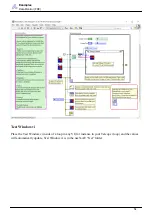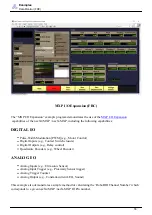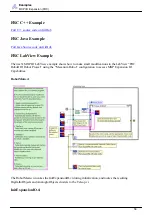
Guidance
Terminology
Important Note: navX-sensor Linear Acceleration values are in World Reference Frame.
Advanced
Advanced users may require knowledge of the following terminology.
Quaternions
is a four-element vector that can be used to encode any rotation in a 3D coordinate system.
This single 4-element vector value can describe not only rotation about a reference frame’s origin (Pitch,
Roll and Yaw) but also the rotation of that entire reference frame with respect to another.
Furthermore, when Pitch, Roll and Yaw measures to perform certain calculations, it is not possible to
clearly ascertain orientation when two axes are aligned with each other; this condition is referred to as
“Gimbal Lock”. For robotics applications, Pitch, Roll and Yaw are sufficient, however for certain
aerospace applications, Quaternions may be required to handle all possible orientations.
navX-sensors use Quaternions internally, and also provide the 4 quaternion values for use by those who
might need them.
Selecting an Interface
The navX2-MXP /navX-MXP sensors provide several methods for communicating with robotics control
applications:
Streaming vs. Register-based Communication
The navX-MXP interfaces fall into two types: Streaming and Register-based.
Streaming: data is sent at regular intervals by the navX-sensor, and the host is notified when new data
arrives. To support the lower bandwidth of the TTL UART interface, streaming data can be transmitted in
two different formats: Processed Data and Raw data. Streaming is used over the TTL UART and USB
interfaces. More details on the communication detail are available in the
Register-based: communication is initiated by the host whenever new data is desired, and the host can
request any data required. Register-based communication is used over the I2C and SPI interfaces. More
details on the communication detail are available in the
.
Comparing the navX-sensor Communication Interfaces
67














































